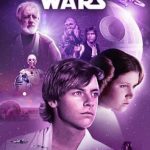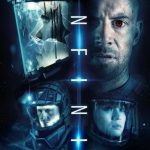Rogue One: A Star Wars Story (2016)
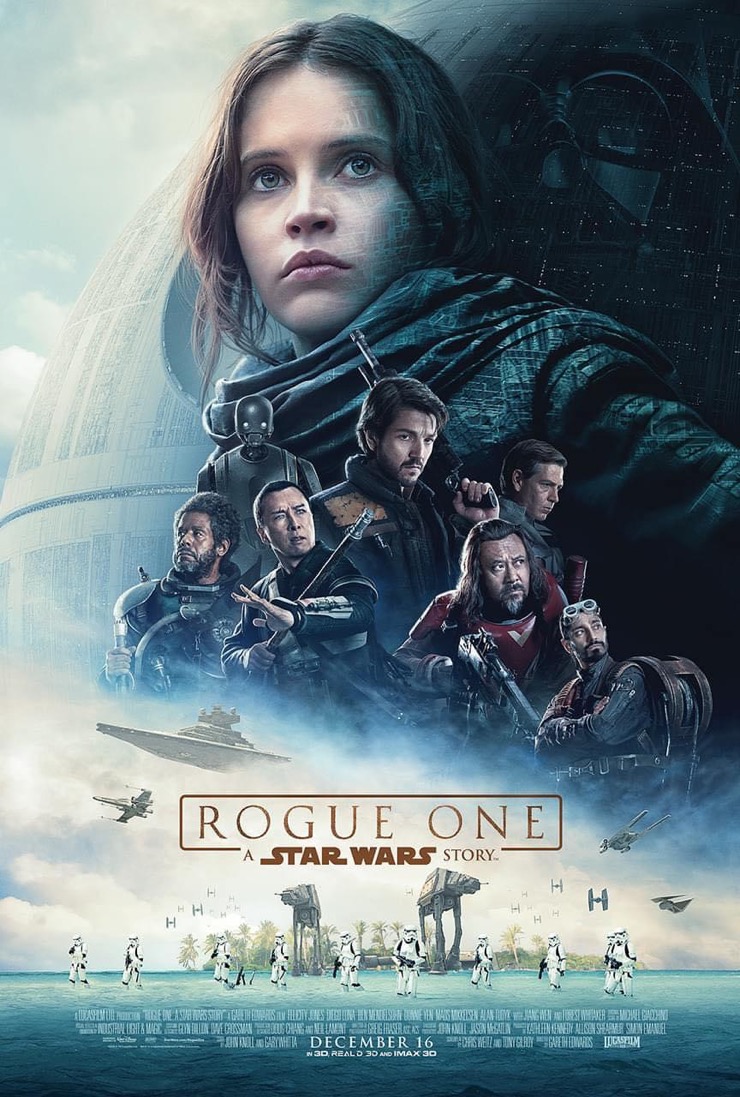
Rogue One: A Star Wars Story (2016), directed by Gareth Edwards, is a standalone entry in the Star Wars universe that bridges the gap between Episode III: Revenge of the Sith and Episode IV: A New Hope. It follows a ragtag group of rebels who embark on a suicide mission to steal the plans for the Death Star, the Empire’s ultimate weapon of mass destruction. While staying true to the franchise’s style and mythology, Rogue One brings a grittier, more grounded tone that explores the sacrifices, moral ambiguities, and resilience of those fighting for freedom in a galaxy oppressed by the Empire.
Suggested videos for you:
Plot Summary
The story centers around Jyn Erso (Felicity Jones), the daughter of Galen Erso (Mads Mikkelsen), a scientist who was forcibly recruited by the Empire to help develop the Death Star. When Rebel intelligence officer Cassian Andor (Diego Luna) learns of a message from Galen indicating a secret flaw in the Death Star, he recruits Jyn in the hope that she can help them locate her father and retrieve the weapon’s blueprints. Along with Cassian, Jyn joins a diverse group of rebels: K-2SO (Alan Tudyk), a reprogrammed Imperial droid with a dry wit; Chirrut Îmwe (Donnie Yen), a blind warrior-monk with a deep belief in the Force; Baze Malbus (Jiang Wen), a loyal soldier; and Bodhi Rook (Riz Ahmed), an Imperial defector.
Their mission is daunting, and as they infiltrate Imperial-controlled territory, they are confronted with the might of the Empire, including Orson Krennic (Ben Mendelsohn), the ruthless director of the Death Star project. Against overwhelming odds, the team infiltrates an Imperial base on the planet Scarif to retrieve the plans. In a final, heroic battle, each member of the team makes the ultimate sacrifice to ensure that the plans reach the Rebel Alliance, setting the stage for the events of A New Hope.
Themes and Tone
Unlike traditional Star Wars films that focus on the mystical aspects of the Force and the Skywalker family saga, Rogue One shifts toward a grounded war narrative. Its tone is darker and grittier, emphasizing the sacrifices required in warfare. The film explores themes of sacrifice, hope, and redemption, revealing that the struggle against tyranny is often messy and morally complex. The Rebel Alliance is not depicted as wholly virtuous; characters like Cassian are shown making morally gray decisions in service of the greater good. This nuanced portrayal of heroism challenges the franchise’s traditional good-versus-evil dichotomy, suggesting that even those on the “right” side can be flawed.
The film also emphasizes hope as a driving force, especially through Jyn’s character. Despite her initially jaded perspective, Jyn comes to represent the courage and optimism that would eventually inspire the Rebellion. Her belief in her father’s mission becomes the core of the film’s message, reminding audiences that even in the bleakest moments, hope can spark change. This theme is underscored by the closing moments, as Jyn and Cassian watch their home planet’s destruction, their sacrifice igniting the spark that will ultimately lead to the Rebellion’s triumph in A New Hope.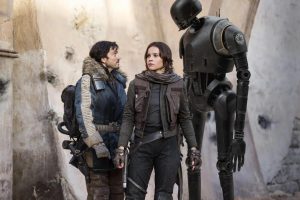
Visuals and Cinematography
Rogue One stands out for its stunning visuals and impressive cinematography, blending iconic Star Wars imagery with gritty, realistic war aesthetics. Gareth Edwards and cinematographer Greig Fraser create sweeping, immersive visuals, from the desolate Imperial installations to the lush, tropical beaches of Scarif, where the film’s climactic battle takes place. The film’s use of handheld shots and dust-covered landscapes gives it a raw, visceral feel uncommon in the franchise. The battle sequences are intense, with a level of realism and tension that evokes classic war films. This grounded approach brings a sense of immediacy and stakes to the action, making the sacrifices of the characters feel impactful.
The special effects, especially in recreating classic Star Wars elements like the Death Star, TIE fighters, and AT-AT walkers, are executed with a meticulous eye for detail, bridging the gap between the 1977 aesthetic of A New Hope and modern filmmaking standards. Additionally, Rogue One utilized groundbreaking CGI to resurrect characters from the original trilogy, such as Grand Moff Tarkin (originally played by Peter Cushing), sparking debates on the ethics of digitally recreating deceased actors. While some found these digital characters uncanny, they nevertheless contributed to the film’s sense of continuity within the Star Wars timeline.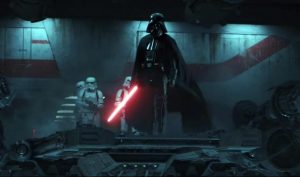
Performances and Characters
Felicity Jones delivers a strong performance as Jyn Erso, portraying her as resilient and driven yet deeply affected by her past. Jyn’s transformation from a reluctant outsider to a passionate rebel is believable and compelling. Diego Luna as Cassian Andor brings complexity to his role, capturing the struggle of a man who has committed questionable acts for what he believes to be a righteous cause. His dynamic with Jyn adds depth to the narrative, as both characters learn to reconcile their pasts in the face of a greater purpose.
Alan Tudyk as K-2SO provides much-needed humor, with his sarcastic remarks balancing the film’s darker tone. As a reprogrammed Imperial droid, K-2SO’s loyalty and unpredictability make him a standout, offering a refreshing take on the typical droid role in Star Wars. Donnie Yen’s Chirrut Îmwe and Jiang Wen’s Baze Malbus form a unique partnership, embodying the spiritual aspect of the Force while representing the everyday heroism of ordinary people. Mendelsohn’s Orson Krennic, while a more traditional villain, exudes a ruthless ambition that aligns well with the Empire’s merciless ethos, and his portrayal adds to the film’s tension.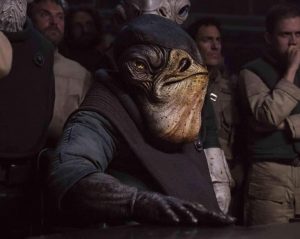
The Legacy of Rogue One
As the first standalone Star Wars story, Rogue One demonstrated the franchise’s potential to expand beyond the Skywalker saga and explore other facets of the Star Wars universe. Its narrative, focusing on ordinary individuals whose bravery and sacrifice underpin the Rebellion’s success, brings a more human perspective to the epic galactic conflict. Rogue One paved the way for other projects that explore side stories within the Star Wars universe, including series like The Mandalorian and Andor, which delve deeper into the lives of those on the fringes of the galaxy.
The film’s final sequence, seamlessly leading into A New Hope with Darth Vader’s terrifying assault on the Rebel soldiers, has been hailed as one of the most thrilling moments in the franchise. Vader’s pursuit of the stolen plans is brutal and chilling, depicting him as an unstoppable force of darkness and enhancing his iconic presence in the saga.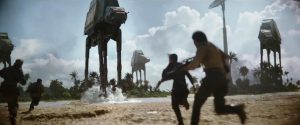
Reception and Cultural Impact
Rogue One was widely praised for its visual design, tone, and fresh take on the Star Wars mythos, earning high praise from critics and fans alike. Its grounded, mature approach attracted both longtime fans and new audiences, many of whom appreciated the film’s emphasis on sacrifice and the real costs of rebellion. The film’s darker tone and ambiguous portrayal of heroism also resonated with those looking for a more nuanced take on the familiar Star Wars universe.
However, Rogue One was not without criticisms. Some viewers found the first half of the film’s pacing uneven, as it juggled multiple settings and character introductions. Additionally, the extensive use of CGI to recreate characters like Tarkin and Leia sparked ethical discussions, with some questioning the morality of digitally recreating actors, especially posthumously.
Conclusion
Rogue One: A Star Wars Story is a bold and powerful addition to the Star Wars canon, delivering a raw, emotional narrative that highlights the sacrifices of unsung heroes. It combines stunning visuals, strong performances, and a resonant story to create a memorable entry in the franchise. By focusing on ordinary characters fighting for a cause greater than themselves, Rogue One captures the spirit of hope, resilience, and heroism that defines Star Wars, while exploring the complexities and moral ambiguities of rebellion. It is a tribute to the sacrifices that lead to freedom, ensuring that the legend of the Rebellion resonates long after the final credits roll.


